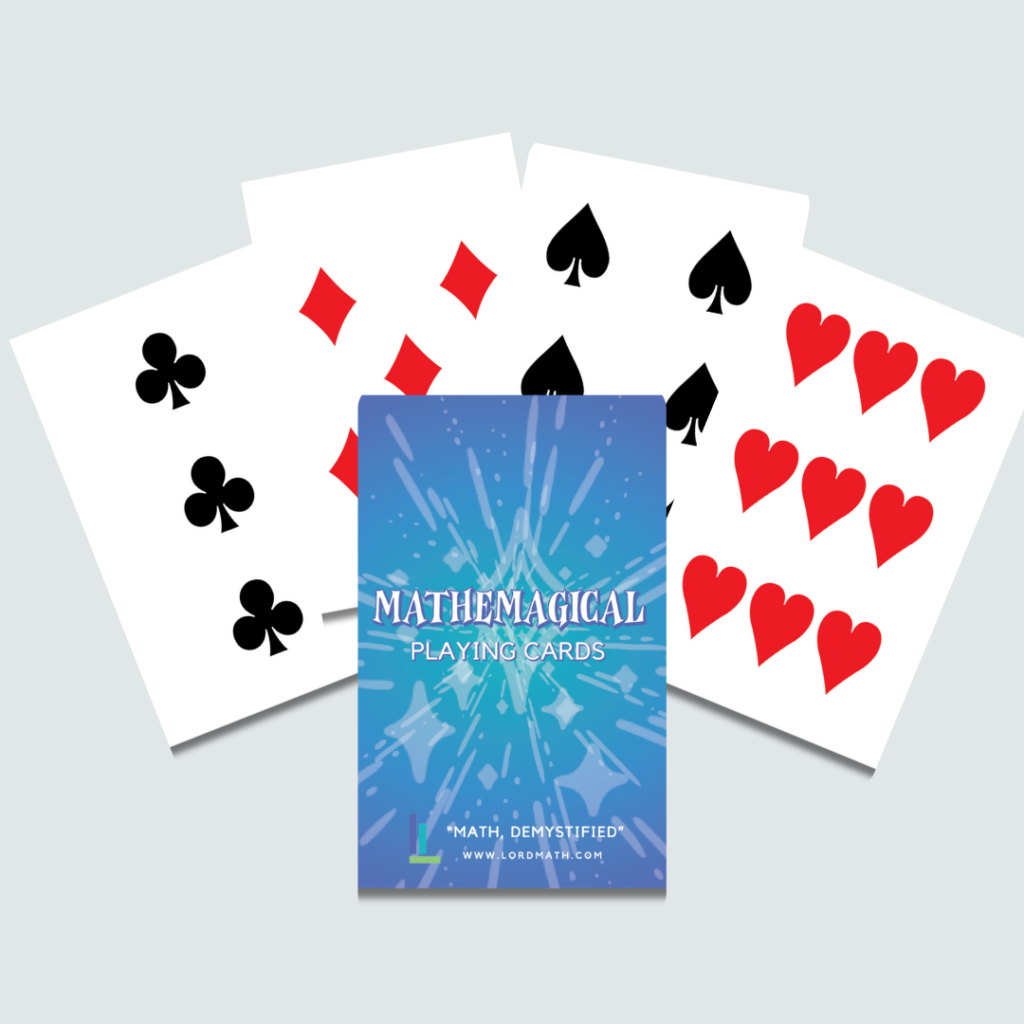Mathemagical Playing Card Games
Playing Cards are the ultimate tool for developing number sense while playing games! This standard 54-card deck features the ideal pip arrangements that strengthen our ability to subitize. Since there are no numerals, students will need to practice subitizing instead. Diamonds and spades feature the 5-group patterns from the dot cards, while hearts and clubs have dice and domino arrangements. Use these just like a regular deck of cards and play games like Go Fish, Go Make 10, Number War, Addition War, Integers War, and more!

Board Games



1. QWIRKLE
Last summer my son Ben learned to play Qwirkle and it quickly became one of our favorite games. Qwirkle helps strengthen pattern development by requiring kids to make trains with colors and shapes.
I love the game, but found I was keeping score for him! My Math Coach Mom brain kicked in and started brainstorming how he could do this himself in an empowering way that also developed number sense.
Enter… Cuisenaire rods, base ten blocks, and relational rod trays!
HERE’S HOW IT WORKS
- Each time Ben played his Qwirkle pieces, he would figure out his score. Then he would select the matching Cuisenaire rod for that score and place it in a relational rod tray, helping him to see when the rods made 10 and eventually 100.
- If the rods added up to more than 10, he would swap them out (decompose) for two rods that equaled the point total. As he placed them in the tray he could quickly see how many tens and ones he had, then eventually we reached one hundred, swapped it out for a hundred block, then continued along!
- Suggestion: Try this same approach to keeping score with the game Race to 100, where players take turns rolling dice.

2. SHUT THE BOX
Shut the Box is a great game where players take turns rolling 2 dice, then adding them together and flipping down the sum (1-10). The challenge is once a particular number has been flipped down, such as the 7, what happens if you roll a 7 again?
Well, what other numbers combine to make 7? Perhaps you have the 5 and 2 available unflipped, or the 3 and 4. Players practice thinking through the combinations for each number and flipping down the numbers. First player to have 1-10 all flipped down wins!
Buy Shut The Box
3. BUDGET
This is for all you upper elementary, middle school, and who knows – even high school teachers out there! When I was a middle school math teacher this was by far our favorite game. I even had a student ask his parents to get it for his birthday and they played regularly at home.
Budget is similar to Monopoly in that players start off with money, roll the dice, take chances and make decisions. Players decide whether or not to purchase options like health insurance, car insurance, stock, bonds, and more. Then they see what happens as they play… if they land on a car accident, do they wish they had insurance?!
If they purchased stock, some spots will have them sell at a profit and some at a loss… There are expenses along the way like groceries, rent, and vacations, and each time players go around the board they get their regular “paycheck”.
The game instructions say to have students create a budget at the start, but I never did – we just started with an equal amount of money, played the game, and found out what happened!
The conversations that came up were amazing: What is stock? What are savings bonds? Why buy insurance??
Buy Budget
Cuisenaire Rods can help students visually track their points in a game. Assign each rod a point value, and as students earn points, they can combine rods to build and update their score. It’s a hands-on way to reinforce math skills while keeping the fun going! Ready to try it out? Purchase yours below from Amazon or Hand2Mind.

Buy from Amazon or relationalrod.com
From $18.95
Bingo


When my son was little, we got a Bingo game set that was aimed for young kids. There were pictures of animals, letters with visuals as sound cues, and then the numbers were just… symbolic numerals.
I immediately wanted to fix it and use visuals to make number meaningful!
Here’s what I created: There are 6 different cards, and each one can be printed with or without the symbol – I prefer without. (The first 2 pages are card 1, the next 2 pages are card 2, etc.) Use this Bingo game with any Bingo callers for numbers 1-50.
Then we brought it out on Christmas and voila, it was a success… fun for the whole family!
Remember we are always seeking the integration of 3 components: visual, language, and symbol.
The concept of number is in the visual of the quantity, language is the word assigned to the quantity, and symbol is the numeral used to represent that quantity. Visual first, language second, then symbol once students have developed conceptual understanding.
Download Bingo

